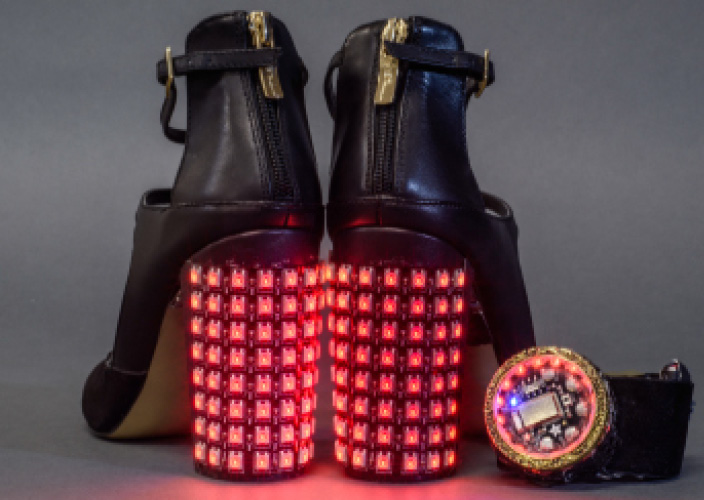
I’m one of those people who is always late to a party because I can’t decide what to wear. I’m also someone who creates elaborate last-minute projects for those parties. This project — I call them my Insta-Hue Heels — was designed and created in less than a week for me to wear to the SparkFun Electronics holiday party.
LEDs on the heels are wirelessly controlled by a matching bracelet connected to Adafruit’s free Bluefruit LE Connect app, allowing for quick color changes for any occasion. The magical effect of instantly controlling color through a smartphone is a great way to interact with other partygoers — let them try changing your look!
It’s easy to replicate with a little time, patience, and the perfect pair of pumps.






 More detail on the code and my latest prototype is available for download at github.com/GellaCraft/InstaHueHeels.
More detail on the code and my latest prototype is available for download at github.com/GellaCraft/InstaHueHeels.

















